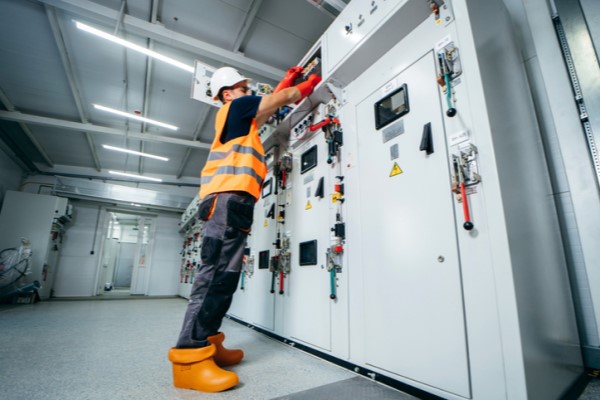Standards Australia offers a clearer path to battery safety
Amendments to a crucial standard for large batteries are underway at a time of rapid growth in the energy storage sector.
Battery energy storage systems (BESS) are using renewable energy to power more homes and businesses than ever before. These systems have the potential to revolutionise the energy landscape by providing a means to store excess energy from renewable sources, such as solar or wind, reducing reliance on traditional power grids. As the BESS is considered to be a source of ignition, it is no surprise to electricians that – if installed incorrectly or not safely commissioned – this storage system poses safety hazards, such as electric shock, fire, explosion, flash burns and/or exposure to hazardous chemicals1. To manage the risk, it’s important to find the right location for the installation, following the guidelines of AS/NZS 3000 – Wiring Rules and AS/NZS 5139 – Electrical installations – Safety of battery systems for use with conversion equipment.
ADVERTISEMENT
Aiming to promote safety of those working with BESSs, AS/NZS 5139 is undergoing amendment to fill industry knowledge gaps and improve safety, consistency and reliability for BESS.
The process to amend the standard has attracted thousands of comments from stakeholders, including battery manufacturers, installers, retailers, regulators, consumers and industry associations.
Primarily, feedback raises concerns about the complexity and potential ambiguity of the standard; its lack of alignment with other relevant standards, such as AS/NZS 3000 Wiring Rules, AS/NZS 4777 Grid Connection of Energy Systems via Inverters and AS/NZS 4509 Stand-alone Power Systems; the potential cost implications; and the need for flexibility in BESS’ design and installation. Stakeholders also highlighted the importance of battery manufacturers providing clear information on the hazards and risks of their products, such as fire, explosion, chemical and mechanical risks associated with different battery chemistries.
With a focus on improving clarity by refining definitions of key terms, the amended document is expected to be completed in early 2024. Furthermore, a more comprehensive revision is on the horizon, following the adoption and revision of The Battery Best Practice Guide (BPG) as a Technical Specification.
The future revision will focus on aligning with other recognised documents and dividing the standard into sub-sections for ease of use. The committee is dedicated to enhancing the AS/NZS 5139 language and readability without compromising safety aspects and, where possible, aligning with international standards. An appendix containing an installer checklist is also expected to be added.
AS/NZS 5139 is anticipated to become an essential resource for manufacturers, system integrators, designers and installers of BESSs.
As Australia moves toward a more sustainable and energy-efficient future, ongoing amendments to AS/NZS 5139 will help play a significant role in ensuring the safe and efficient integration of BESS into Australians’ daily lives. The ongoing efforts to enhance this standard reflect a commitment to harnessing the potential of renewable energy while prioritising safety and reliability.
-
ADVERTISEMENT
-
ADVERTISEMENT


